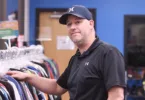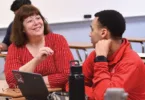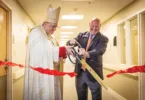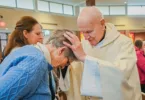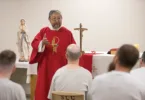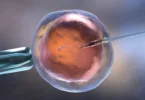Family seeks bone marrow donor for brothers
by Jessica Langdon
jessica.langdon@theleaven.org
KANSAS CITY, Kan. — When the Murry family talks about finding the “perfect match” or “the one,” they’re not talking about a great date.
They’re looking for someone — maybe even in the Kansas City area — who might be able to save lives.
Finding the perfect match for a bone marrow transplant could make a world of difference for four brothers: 21-year-old Sean, 17-year-old
Patrick, 10-year-old Danny and 8-year-old Timmy.
All four boys, who live in St. Louis, have a rare condition called Diamond-Blackfan anemia.
Their grandfather John Murry, retired president of Donnelly College in Kansas City, Kan., hopes upcoming donor registration drives will reveal a “genetic twin” who can help give his grandsons long, healthy lives.
And the timing’s getting critical, said Murry, especially for the two older boys.
Lighting strikes four times
When Murry’s son Tim and wife Maggie welcomed their oldest son Sean into the world 21 years ago, neither had ever heard of Diamond-Blackfan anemia.
Few people had. Their baby had the distinction of being only the 151st person with the diagnosis.
“Their bone marrow doesn’t produce any red blood cells,” explained Murry. “Basically, they don’t produce any of their own blood.”
Lightning struck three more times for the family, with each younger brother also born with the same condition.
The two youngest boys have had it easier so far, thanks to medications.
But their family knows that might not always be the case.
Sean and Patrick, on the other hand, have both faced blood transfusions every few weeks for their entire lives.
Transfusion dangers
Because their blood doesn’t renew itself, it has a short “shelf life” in the body, Murry explained.
So Sean — a student at Lindenwood University in St. Charles, Mo., who dreams of a career in show business — and Patrick — a high school letterman in bowling with a passion for marine biology — take time out of their schedules every three weeks for the hours-long process.
Those necessary and frequent transfusions are actually what make Diamond-Blackfan anemia so dangerous in the long run.
“You have a buildup of iron in the system,” said Murry.
For much of Sean and Patrick’s lives, that meant needles in their thighs every night and hours of pumping to get the iron out. Medicine now does that job.
But that doesn’t erase all of the iron, and the excess eventually destroys vital organs — including the heart and liver.
“The older you get, the more iron builds up in the system,” said Murry.
So finding a match for a bone marrow transplant for them is more pressing than ever.
The idea is to basically “install” someone else’s blood system into the boys.
Greater numbers, greater chances
Two potential matches for Sean and Patrick have already fallen through.
Facing those disappointments, family members started thinking about ways to increase their own chances of finding a match while also helping the roughly 10,000 others who are waiting for life-saving bone marrow transplants.
Only about two percent of the U.S. population is on the registry from which doctors seek matches for their patients.
Unfortunately, six out of 10 people never receive the marrow transplants that could save their lives, according to the bone marrow donor center DKMS Americas, which works with the Murry family to set up donor drives.
“It is very difficult to find that perfect match,” said Joyce Jones, DKMS donor recruiter manager. “Only about 30 percent will find it within their family.”
So greater numbers on the registry can only mean one thing, said Murry: “A greater chance of having a match.”
‘Get swabbed’
The boys are part of a big Catholic family — with lots of members in Kansas City. And family members have been busy organizing registration drives, many of them at area parishes.
The family and DKMS encourage people to “get swabbed” and possibly save a life.
Registration involves simple swabs of the insides of both cheeks to collect cells for tissue typing.
To be added to the registry, potential donors must be between the ages of 18 and 55 and meet a few basic health requirements.
It only takes about 10 minutes to register and doesn’t cost the potential donor anything (although DKMS welcomes donations to cover the $65 it takes to add each new donor to the registry).
“It is as simple as filling out a form and getting your cheeks swabbed with a cotton swab,” said Jones.
‘I hope I’m the one’
For years, when someone turned out to be a match, bone marrow was generally taken from the donor’s pelvic area.
That still happens in certain cases.
More often, though, procedures called “peripheral blood stem-cell donations” take place.
A donor’s blood is bolstered by a synthetic protein a few days ahead of time.
Then, on the day of the collection, a needle removes blood from one arm, and a machine separates out the blood stem cells.
The remaining blood is then replaced in the donor’s other arm.
It’s up to the doctors in each case to determine which method will work best.
The procedure is far easier on the donor than it is on the recipient, who must go through a much more intensive process, said Murry.
His family isn’t the only one praying for a match, he said. But having organized these drives, he and his family members always thank profusely everyone who registers.
Still, it seems that the people who register are equally thankful for the opportunity.
“The typical comment we get,” said Murry, “is: ‘I hope I’m the one.’”

